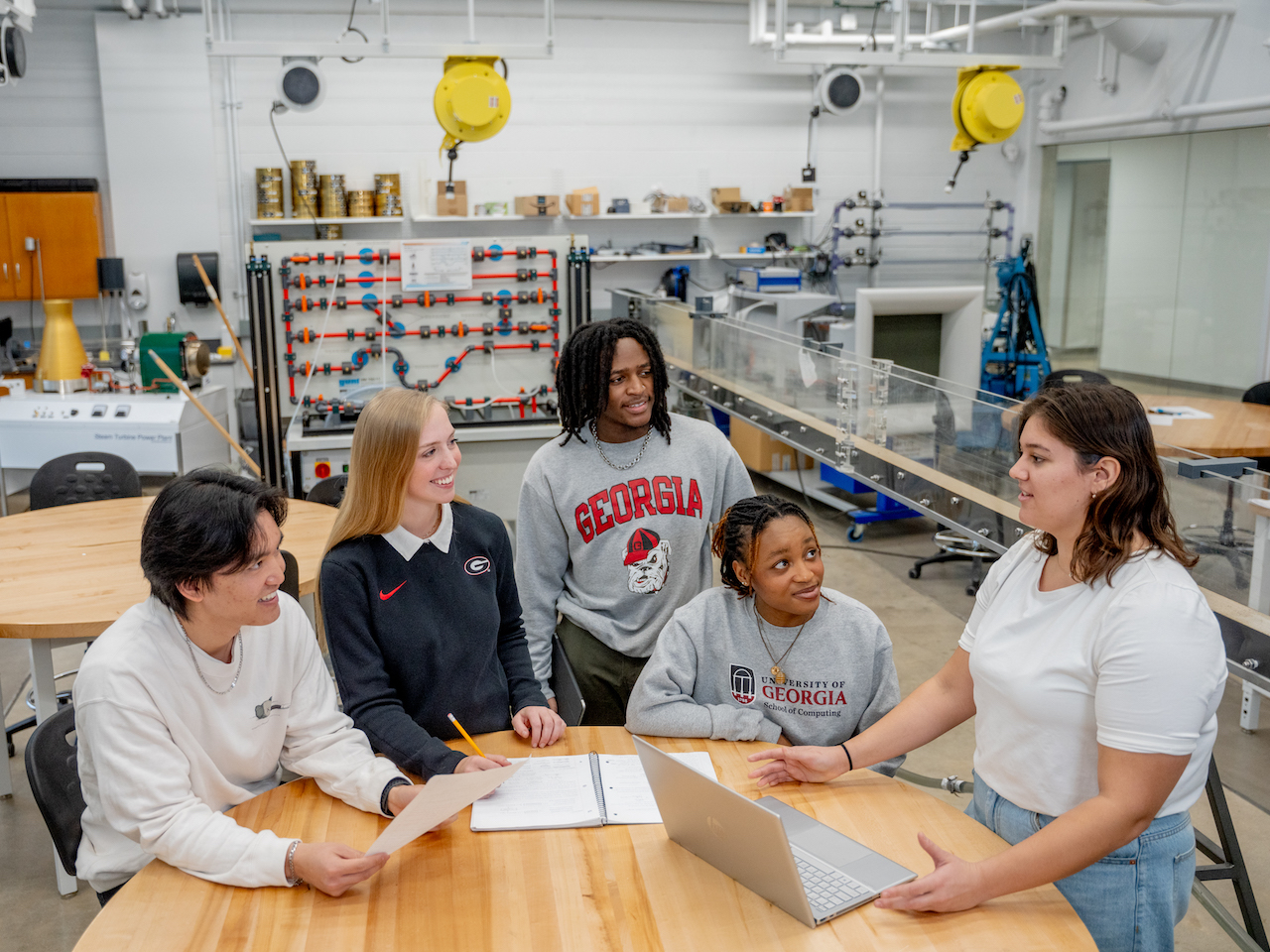 The University of Georgia CubeSat project is among 34 small satellites selected by NASA to fly as auxiliary payloads aboard missions planned to launch in 2018, 2019 and 2020.
The University of Georgia CubeSat project is among 34 small satellites selected by NASA to fly as auxiliary payloads aboard missions planned to launch in 2018, 2019 and 2020.
The UGA project, led by a team of undergraduate students and including faculty from the Franklin College of Arts and Sciences and the College of Engineering, performs multispectral analysis from low Earth orbit, in this case an altitude of 400 kilometers.
“When our project was selected in 2016 to design and build a small satellite called CubeSat under NASA’s Undergraduate Student Instrument Project (USIP) program, the grant did not guarantee launch,” said Deepak Mishra, associate professor of geography and faculty advisor to the UGA CubeSat group. “We recently received the news that UGA’s CubeSat had been selected.”
CubeSats are a class of research spacecraft called nanosatellites. UGA’s SPectral and Ocean Color Satellite, or SPOC, measures about 4 inches high, 4 inches wide and 13 inches long, and it will acquire moderate resolution imagery across a wide range of spectral bands to monitor Georgia’s coastal ecosystems and ocean color. The sensor for the satellite is currently being designed by students in the lab and will be built in the coming months.
Once completed SPOC will acquire image data to monitor coastal wetlands status; estuarine water quality including wetland biophysical characteristics and phytoplankton dynamics; and near-coastal ocean productivity. SPOC will use hyperspectral remote sensing techniques to quantify vegetation health, primary productivity, ocean productivity, suspended sediments, and organic matter in coastal regions with a specific focus on the Georgia coast.
“Having SPOC being officially selected as a candidate of NASA’s CubeSat Launch Initiative solidifies the significance of the project,” said David Cotton, assistant research scientist and adviser on the project. “Having UGA build a payload is an honor, but having it selected for launch makes it a reality for myself, the students and the university.”
“The selection really speaks the passion and dedication of the students and faculty at UGA—that a student team can build a spacecraft, which typically only nation states and large corporations have been able to accomplish,” said Caleb Adams of Powder Springs, an astrophysics and computer science double major and chief manager of the satellite research lab. “The SPOC will generate useful data, comparable to the NASA MODIS sensor, so SPOC is not just an educational tool but a state-of-the-art spacecraft that is on par with current cutting edge technologies.”
NASA selected 34 small satellites from 19 states and the District of Columbia to fly as auxiliary payloads aboard missions planned to launch between 2018 and 2020. Launch opportunities are leveraged from existing launch services for government payloads as well as via dedicated CubeSat launches. The proposed CubeSats come from educational institutions, universities, nonprofit organizations and NASA centers.
The selections are part of the eighth round of the agency’s CubeSat Launch Initiative. The selected spacecraft are eligible for placement on a launch manifest after final negotiations, depending on the availability of a flight opportunity. After launch, the satellites will conduct technology demonstrations, scientific investigations and provide educational benefits.
To date, the CubeSat Launch Initiative has selected 152 CubeSats from 38 states and has launched 46 CubeSat missions as part of the NASA Launch Services Program’s Educational Launch of Nanosatellite Missions. This year, NASA made the CSLI’s very first selections from Arkansas, Georgia, Iowa, Minnesota, Oregon, Washington and the District of Columbia.
For more information on the UGA Small Satellite research lab, visit http://www.smallsat.uga.edu


